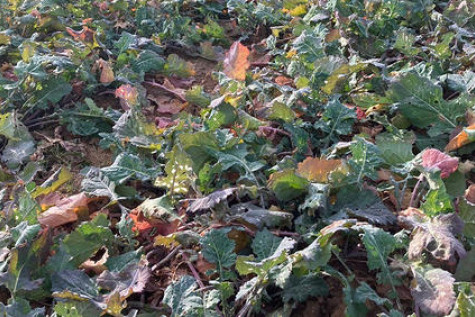Rural
10 July, 2024
Canola growers warned of aphid outbreaks
"Moderate-high" numbers of green peach aphid have been reported in canola across the Riverina and in other regions of New South Wales, and could be headed this way.

Wagga Wagga, Coolamon, Jerilderie, Canowindra, Cowra, Young, Boorowa, Yass and Harden are among the districts most seriously affected by infestations of green peach aphid so far.
"The heaviest infestations are typically being found in early-sown canola crops, which is potentially the result of early aphid activity coinciding with canola plants no longer being protected by insecticide seed treatments," a spokesperson for the Grains Research & Development Corporation (GRDC) said.
"Aphid numbers being observed are variable - in some cases crops have had 5-10 winged adults and 20-30 nymphs per leaf on most plants."
The spokesperson said while not all infestations were this severe, some fields were showing signs of turnip yellows virus (TuYV) - formerly known as beet western yellows virus - and the presence of green peach aphids raised concerns about its potential transmission.
In response, Cesar Australia has tested both canola samples and green peach aphids from more than 25 locations, including Jugiong, Boorowa, Harden, Galong, Young, Thuddungra, Milvale and Temora.
Most of these samples have tested positive for TuYV.
Although similar issues have not been widely reported yet south of the Murray, Victorian growers are urged to actively monitor canola crops for aphids and signs of virus over the coming weeks.
"With many canola crops still in early growth stages, the decision to spray insecticides is delicate and potentially costly, made even more important due to the growing problem of insecticide resistance," the GRDC spokesperson said.
"In virus-prone areas, growers are recommended to monitor aphid activity closely - particularly along field edges to detect aphid movement - and ensure correct identification of green peach aphids before making any spray decisions."